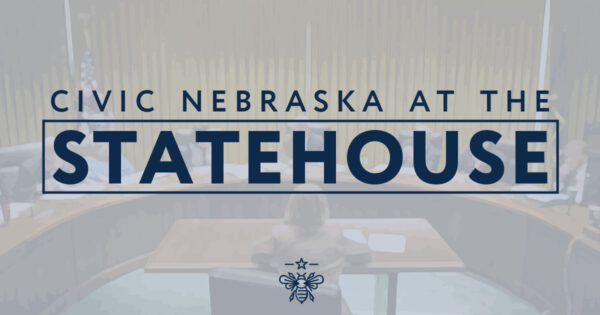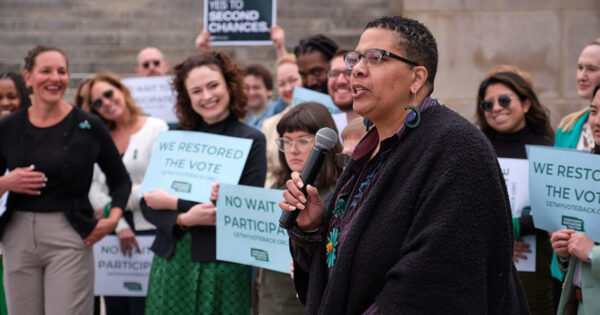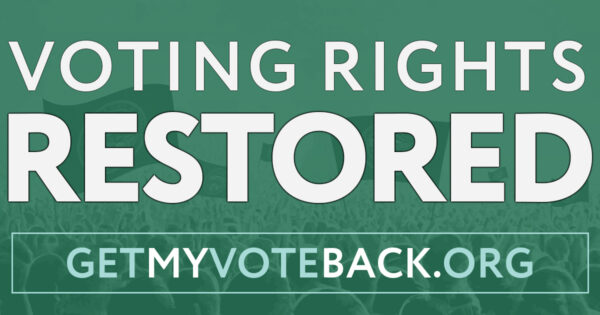Reprinted by permission from the author and the Nebraska State Bar Association, The Nebraska Lawyer (March/April 2020).
September 17, 1787, was a cool, sunny day when delegates of the Constitutional Convention gathered at Independence Hall in Philadelphia for the last time. Since May, representatives from the newly formed states, except for Rhode Island, deliberated on how they were going to save the country.
During this time, the young Republic suffered from serious economic problems that came to a head with Shay’s Rebellion—a violent uprising in western Massachusetts leaving six dead rebels, two by hanging—and fears that the country was on the verge of collapse. Although there was much debate over this period, the unanimous point of agreement was the existing Articles of Confederation led to an unworkable form of government.
Many of the issues stemmed from the country’s inability to raise revenues to pay off war debts and a weak central government that could not adequately handle interstate conflicts. These factors, among others, spurred a convention whose original purpose was not to completely cast out the existing form of government but to simply amend the existing articles.

In the beginning, however, most of the delegates agreed to instead create a new system of government. So, with George Washington as the convention’s elected president, these men came together and managed to not only shrug off a defunct government but to install the world’s oldest surviving one-document constitutional text which still governs an entire nation.
You’ll find no shortage of books, articles, and other materials that discuss what a miracle this act was in and of itself. For a nation to have just emerged from a grueling revolutionary war and then to completely transform its style of government all within four years—and without another war—was certainly an improbable outcome. Benjamin Franklin summarized it best on the day’s opening speech by saying, “I doubt too whether any other Convention we can obtain can make a better Constitution.”
Scholars and politicians typically agree the Constitution has served us well, that it is the very hallmark of freedom: except this notion ignores the glaring reality of what the United States of America looked like at its inception. Independence Hall may have had the nation’s leading minds in the room, but it was still missing from its ranks people who were not white, landowning males.
The Constitution’s preamble, which installed a government where the right to vote excluded practically everyone and protected the slave trade, reads:
We the People of the United States, in Order to form a more perfect Union, establish Justice, insure domestic Tranquility, provide for the common defence, promote the general Welfare, and secure the Blessings of Liberty to ourselves and our Posterity.
The founders responsible for this document had spent much of their lives as students of remarkable philosophers such as Voltaire, Montesquieu, John Locke, and Jean-Jacques Rousseau. But they were still a product of their time. Many owned slaves. Most held prejudices that would be considered repugnant today. Even John Adams, a staunch abolitionist, did not believe in extending voting rights outside the 21-year-old, white male club. In a 1776 letter, he responded to a question addressing this issue writing, “it is dangerous to open So fruitfull a Source of Controversy and Altercation, as would be opened by attempting to alter the Qualifications of Voters. There will be no End of it. New Claims will arise. Women will demand a Vote. Lads from 12 to 21 will think their Rights not enough attended to, and every Man, who has not a Farthing, will demand an equal Voice with any other in all Acts of State.”
Among writings the founders produced there were consistent themes: pure democracy was a recipe for disaster; white males with property were the only ones who could make sound, voting decisions; and for the nation to survive, there must be a compromise on slavery. One could argue that in the beginning, We the People did not actually mean all people; but rather anyone who looked like the original men who signed the Constitution.
A voting rights timeline
Over time, this idea has changed, and it was not as quickly as some might believe today. Article I, Section 4 of the Constitution left many of the details about who can vote to the states. This caused a slow cascade of reforms and movements that expanded voting rights at the cost of an unfathomable amount of blood, sweat, and tears.
- 1776: State constitutions only permit white, land-owning the elective franchise.
- 1856: Almost 100 years later, North Carolina becomes the last state to remove property ownership as a requirement to vote, securing universal white male suffrage for the first time.
- 1868: 14th Amendment is ratified, granting former slaves citizenship.
- 1869: Wyoming Territory becomes the first to grant women the right to vote.
- 1870: The ratification of the 15th Amendment prevents federal or state governments from denying the right to vote to citizens based on race.
- 1872: Susan B. Anthony is arrested for attempting to vote in a presidential election.
- 1882: Passage of the Chinese Exclusion Act prevents Chinese immigrants from becoming U.S. citizens.
- 1884: The Supreme Court in Elk v. Wilkins rules that Native Americans are not citizens as defined by the 14th Amendment and cannot vote.
- 1917: Nebraska passes a limited suffrage act giving women the right to vote in municipal and presidential elections but still cannot vote for candidates for statewide offices.
- 1919: Nebraska ratifies the 19th Amendment.
- 1920: The 19th Amendment is ratified and grants suffrage to women, but many Native and Asian women are still not considered citizens.
- 1921: The Supreme Court in Newberry v. United States rules that the federal government has no authority over state primary elections. This paves the way for rampant disenfranchisement practices.
- 1924: The passage of the Indian Citizenship Act grants Natives full citizenship. Many states respond by making laws that effectively prevent them from voting.
- 1926: African American women attempting to register to vote in Birmingham, Alabama, are beaten by election officials.
- 1952: McCarran-Walter Act grants all Asian Americans citizenship and voting rights.
- 1961: The 23rd Amendment gives Washington, D.C., residents the ability to vote for presidents but still don’t have congressional representation.
- 1964: James Chaney, Andrew Goodman, and Michael Schwerner, civil rights activists helping African Americans in Mississippi register to vote are arrested, turned over to Klansmen and murdered. Also this year, the 24th Amendment is ratified, eliminating poll taxes.
- 1965: Passage of the Voting Rights Act eliminates discriminatory voting restrictions such as literacy tests and provides for proscribed enforcement mechanisms for the federal government.
- 1971: The 26th Amendment is ratified; it granted voting rights to people 18 years and older.
- 1993: National Voter Registration Act is passed and provides for voter registration materials at the Department of Motor Vehicles and other public assistance and disability agencies.
- 1998: Oregon passes Ballot Measure 60, making it the first state to conduct its elections exclusively by mail.
- 2000: In Igartua de la Rosa v. United States II, the First Circuit rules once again that Puerto Ricans living in Puerto Rico cannot vote for president. The same is true for residents of other U.S. territories such as Guam, American Samoa, and the U.S. Virgin Islands. Today, they are still citizens who have no voting representation in Congress.
- 2001: The National Commission on Federal Election Reform recommends all states allow felons to regain voting rights after completion of their sentences. Almost 4 million U.S. citizens are barred from voting as a result of these post-Civil War laws that attempted to prevent African Americans from voting.
- 2002: Passage of the Help America Vote Act requires states to comply with federal standards for provisional ballots, disability access, electronic voting, computerized statewide voter registration databases, and requires first-time voters who registered by mail to present identification before they are allowed to vote.
- 2004: Arizona passes Proposition 200, requiring voters to provide proof of citizenship before registering to vote and for voters to provide photo identification before receiving a ballot at their polling place.
- 2005: After overriding Gov. Dave Heineman’s veto, the Nebraska Legislature changes the lifetime voting ban for felons to a two-year waiting period following completion of their sentences including probation or parole. Also, Indiana becomes the first state to pass a strict photo identification requirement for all voters.
- 2008: The U.S. Supreme Court with a 6-3 decision in Crawford v. Marion County upholds Indiana’s voter ID law, concluding that the photo ID requirement was closely related to Indiana’s legitimate state interests in preventing voter fraud.
- 2013: The U.S. Supreme Court, with a 5-4 decision in Shelby v. Holder, declares Section 4(b) of the Voting Rights Act of 1965 unconstitutional. States who had a history of proven voter discrimination no longer had to obtain preclearance from a federal court before changing their voter laws. Within a day of this decision, Texas, North Carolina, Mississippi, and Alabama begin to implement strict photo ID policies.
- 2017: The Nebraska Legislature passes LB75, allowing the right to vote for felons after completing their sentences with no waiting period. Gov. Pete Ricketts vetoes the bill and the following override is unsuccessful.
- 2018: The Presidential Advisory Commission on Election Integrity, a Presidential Commission established in 2017 by President Trump tasked with reviewing claims of voter fraud, is disbanded without finding evidence to support the claims of widespread voter fraud.
- 2020: LR292CA is introduced in the Nebraska Legislature to require poll workers to review a person’s photo before allowing them to vote. In eight straight years in the prior decade, Nebraska lawmakers have introduced, debated, and failed to pass a voter ID bill. Also this year, the Missouri Supreme Court blocked a portion of the state’s voter ID framework in a 5-2 decision. Voters are again allowed to bring non-photo identification by striking down a requirement for voters to sign an affidavit stating they don’t have a form of personal identification approved for voting.
Two Steps Forward, One Step Back
It took almost 200 years to arrive at the current voting demographic seen now. The above timeline is by no means an exhaustive list of voting rights events, but it does a good job of demonstrating the seemingly fundamental law of nature that whenever voting rights have been expanded it is met with harsh, and oftentimes deadly, resistance. In some instances, there have been serious regressions that have all but eliminated the franchise for many Americans.
To further illustrate this point, focus your mind’s eye to the late 1800s, where you can watch how large-scale voter suppression first unfolded in America. It began as a response to Reconstruction following the Civil War when suddenly millions of African Americans became eligible to register and vote in elections. Whites, who had been in power for generations, were coming to terms that they could no longer shut out freed slaves from politics.
As freedmen began to win elected positions, the response came draped in racism, violence, and Jim Crow laws. One newspaper editor from that time summarized the mood by writing that “no Negro is fit to make laws for white people.” White lawmakers at this time had a big problem in the Constitution, specifically, the newly enshrined 15th Amendment. Despite these obstacles, the architects of voter suppression wrote around the law to disenfranchise as many nonwhite voters as possible.
We can see the culmination of those early efforts in 1890 when the Magnolia State passed the Mississippi Plan. This had established requirements for literacy tests, poll taxes, understanding clauses, and complicated voter registration rules, and good character clauses before someone could even cast a vote. All of these laws were sold as bringing “integrity” to the voting booth but were nothing more than racially discriminatory provisions aimed at stopping blacks from acquiring equality and power through political representation. After seeing the “success” of this plan, one Virginia representative, Carter Glass, sought to bring it to his own backyard through a state constitutional convention. Some of his colleagues thought that these provisions would exclude too many white voters; his response met with applause, was that it “does not necessarily deprive a single white man of the ballot, but will inevitably cut from the existing electorate four-fifths of the negro voters.” Further saying, “that was the purpose of this convention; that will be its achievement.”
“Will it not be done by fraud and discrimination?” one delegate asked. “By fraud, no; by discrimination, yes,” Glass replied. “But it will be discrimination within the letter of the law, and not in violation of the law. Discrimination! Why that is precisely what we propose; that, exactly, is what this convention was elected for—to discriminate to the very extremity of permissible action under the limitations of the Federal Constitution, with a view to the elimination of every Negro voter who can be gotten rid of legally without materially impairing the numerical strength of the white electorate … It is fine discrimination, indeed, that we have practiced in the fabrication of this plan, and now, Mr. President, we ask the convention to confirm our work and emancipate Virginia. I ask for a vote on the article of suffrage.”
The article of suffrage in Virginia was overwhelmingly approved, and what came next was one of the greatest tragedies of the American democratic experiment. Throughout the South, these laws were replicated and as a direct result “voter turnout plummeted to less than half of age-eligible whites” after peaking in 1896 at 79.6 percent. From the late nineteenth century to the early twentieth century, Mississippi’s total voter turnout dropped from 70 percent to 15 percent.
Unfortunately, Glass was proven correct: the elimination of poor white voters was nothing compared to what happened to black voter turnout. In 1896, Louisiana had 130,000 black voters on the voter registration rolls; in 1904, that number had dropped to 1,342. For Alabama, the number dropped from 180,000 to 3,000 in just three years. Only 3 percent of age-eligible African Americans were registered to vote in the South by 1940, showing just how brutally efficient these voter suppression laws truly were. This systematic denial of the right to vote had exceeded its goal of eliminating four-fifths of black voters with a 90 percent disenfranchisement rate across the South.
Some of the most effective forms of voter suppression came in the form of understanding clauses and literacy tests, as these had been hand-crafted for a society that had refused to educate millions of their citizens, leaving many illiterate. Jim Crow days would eventually give way to better days thanks to reforms forced by rulings from the U.S. Supreme Court and through the passage of the Voting Rights Act of 1965, partially prompted by extreme public backlash to the unspeakable horrors happening to civil rights workers and black voters merely trying to exercise their constitutional rights. The immediate effect was remarkable. African American registration in Mississippi went from less than 10 percent in 1964 to almost 60 percent in 1968, Alabama rose from 24 percent to 57 percent. Within just a few years after passage of the Voting Rights Act, “roughly a million new voters were registered…bringing African American registration to a record 62 percent.”
“There Will Be No End of It”
It is hard to even begin to speculate how much damage these policies have caused us today. It is especially difficult for me to articulate them, as I am writing this article from the perspective of a white male. We shut out of the political process millions of Americans only by virtue of their skin colors, ethnicities, and genders for over a hundred years. This has left detrimental ripples in time as we still deal with the consequences today. Policies that were designed to look race-neutral had, in fact, devastated communities of color according to the express intent of their designers. These laws were justified by many of the same lines we hear today supporting laws that implement voting pre-qualifications, such as “any person unwilling to pay a small fee in order to enjoy such a precious privilege did not deserve the franchise.”
Or, take a current example from popular political pundit Ann Coulter: “I just think it should be a little more difficult to vote. There’s nothing unconstitutional about literacy tests.” Perhaps the most hotly contested voting rights issue now is the battle over voter ID proposals. In the Nebraska Legislature, there have been over 10 years of debate. Proponents claim it is necessary to prevent voter corruption such as the type seen in other states and to ensure the “integrity” of elections; opponents say it is a problem in search of a solution, as there has never been a single voter impersonation conviction in the state’s entire election history, and that ultimately a law would disenfranchise thousands of voters with some fiscal cost estimates in the millions of dollars to implement. I encourage any reader who is interested in this topic to do independent research for themselves on these policies, including the mountain of cases, ongoing or over, litigating against implementation. These cases highlight the vast number of otherwise eligible, but nevertheless disenfranchised voters.
The position of this article is that a citizen’s access to the ballot box should never be dependent on their financial status or resources. Furthermore, thanks to arguably the nation’s best state constitutional provision that addresses voter rights, it is an incredibly high bar to implement any sort of regressive measure that would impose a financial cost on people exercising their fundamental rights. Nebraska Constitution Article I, Section 22 eloquently states that “[a]ll elections shall be free; and there shall be no hindrance or impediment to the right of a qualified voter to exercise the elective franchise.”
The United States of America has certainly made significant reforms since that cool, sunny day in Philadelphia. That is undeniable. It is also undeniable that the journey towards equality, justice, and representation for all people remains unfinished as voter suppression, racism, and bad intentions to disrupt the electorate for partisan purposes linger to this day. We must keep in mind our tarnished past in order to appropriately frame the voting policies of today.
The Union is stronger today than ever before because we have opened up the ballot box to ensure better representation which begets equality and justice. This was a significant deviation from the intentions of the founders, and it didn’t happen by accident but by the blood of martyrs and through the unified voice of millions of people demanding their rights. In the end, John Adams was right when he said, “there will be no end of it,” and that is a good thing.
![]()
John Cartier is the director of voting rights at Civic Nebraska.



